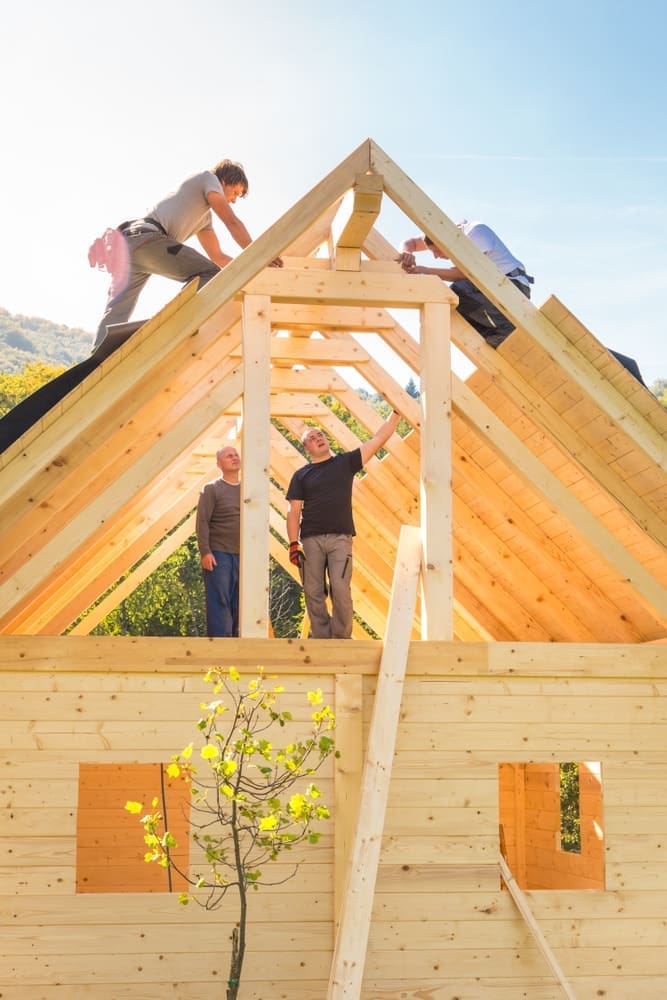The thermal envelope over your home plays an important role in its energy efficiency. When you’re building a home that’s built for optimal efficiency, like a Passive House, then the role of the building envelope becomes even more important.
When the building envelope is properly sealed, secure, and insulated, it’s much easier to achieve energy efficiency goals. In fact, with a very tight thermal envelope, the home you’re building can come as close as possible to achieving total efficiency. This saves your clients money and ultimately helps the building achieve Passive House certification.
It’s important to know the true benefits of the building envelope as you get started with construction and how to make the envelope as tight as possible. Here’s what you need to know as you start construction.
What is a Thermal Envelope?
The thermal envelope is the seal around the house that shields the indoors from the outdoors. The thermal envelope is made up of many materials including the floors, windows, exterior walls, vapor retarders, insulation, weatherstripping, and more.
All of these materials come together to create a shield that repels elements like precipitation and extreme temperatures. A part of the thermal envelope includes moisture control and temperature control. The thermal envelope is also tied up with the structural integrity of the home. The envelope prevents air leaks and keeps the temperature controlled (and moisture controlled) air indoors.
What is the Purpose of a Thermal Envelope?
There are three purposes for installing a thermal envelope around your home:
- Controlling moisture. An effective thermal envelope will control moisture in the home, preventing mold and mildew from doing damage to the home’s walls, floors, and other surfaces. In the past, some thermal envelopes trapped moisture indoors, leading to a buildup of condensation inside. It’s important to use a thermal envelope that will allow for moisture control without causing such a buildup of condensation.
- Controlling air and air movement. Controlling air within the home is important for preventing energy leaks that can have an impact on your home’s thermal envelope.
- Controlling temperature. The more you can control air movement and moisture, the easier it becomes to control the temperature of your home indoors. Proper control ensures that the home you build will be cool in summer, warm in winter, and will remain at a comfortable temperature throughout the year.

What Aspects Affect a Thermal Envelope
There are many aspects that affect a thermal envelope, including the quality of the materials and the expertise with which the envelope is installed. Passive Homes have a thermal envelope that’s built specifically to control the temperature, air, and moisture to the utmost degree possible. The thermal envelope in a Passive Home also minimizes thermal bridging to ensure complete energy efficiency.
Benefits of a Thermal Envelope
The benefits of a house with a strong thermal envelope become clear when you understand the purpose of the envelope. The thermal envelope minimizes heat and cold transfer between the inside and outside, which helps you control the temperature inside your home. This is the foundational purpose of Passive Homes: to maximize energy efficiency by securing the home’s thermal envelope and preventing transfer of heat and cold.
This leads to another great benefit of the thermal envelope: total eco-friendliness. By reducing the amount of energy it takes to heat and cool your home, the thermal envelope makes your home a more eco-friendly structure. This can also raise your home’s value for home buyers seeking a more environmentally friendly house. As time goes on and climate change becomes a more important factor in the equation of what makes a sound and valuable structure, this will have a greater impact on the actual value of the home.
Financial savings is another clear benefit of a tight thermal envelope. The thermal envelope makes heating and cooling easier and less expensive, potentially reducing utility bills dramatically.
One more benefit: better indoor air quality. Allergens are unable to enter the home through a tight thermal envelope, which means that the indoor air quality inside the home is better. This is healthier for homeowners and their family members.
How Can You Prevent Thermal Bridging When Building
The thermal bridge is a weak point in the thermal envelope. Passive Homes are dependent upon a minimal number of thermal bridges in the building envelope. There are many ways to reduce the number of thermal bridges on a structure.
- Create continuous insulation. Creating continuous insulation around the building envelope reduces the number of weak points and thus the number of bridges. Installing rigid panels over the exterior can achieve this goal.
- Use seam tape. Seam tape reduces the breaks in the insulation and thus tightens the building envelope.
- Insulate the roof. All aspects of the building envelope must be properly sealed, including the roof.
- Use products specifically designed for Passive House construction. Some products are specifically designed to provide total energy efficiency, for Passive House construction.
Variety of High Performance Building Supplies from Source 2050
Source 2050 sells high performance building supplies to ensure a tight thermal envelope and to help achieve Passive House certification. We sell Passive House air sealing systems, insulation, windows and doors, ventilation systems, wall assembly and more. To learn more about the specialized products that we sell, including bundled systems and heating and cooling products, explore our website. We sell a variety of products to help make your home more energy efficient.
If you’re a builder, we can help you construct building envelopes that truly achieve your energy goals and ensure that the house you’re building can achieve Passive House certification. Contact us today to get started with your purchase.


